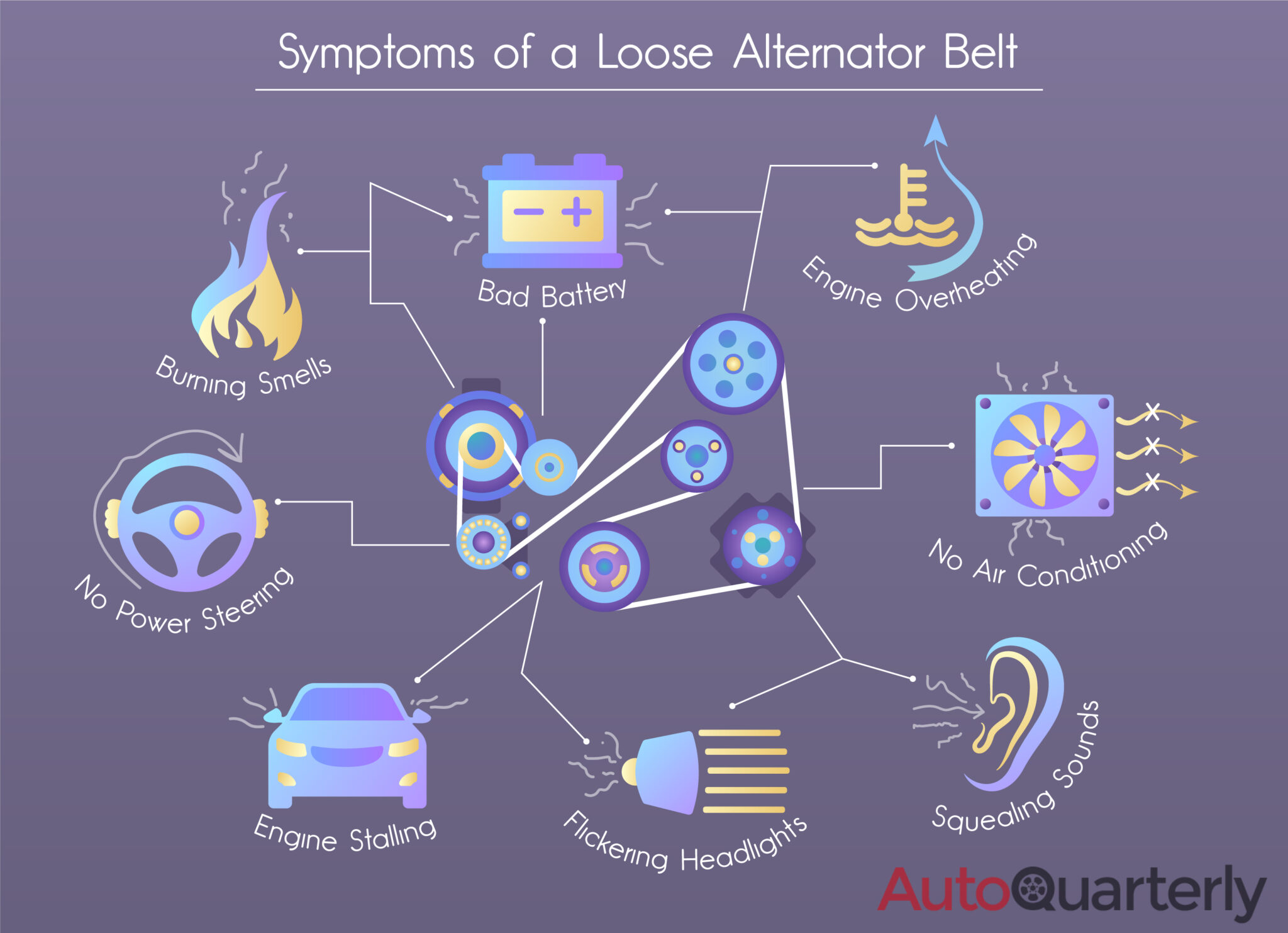Alternator Belt Loose Symptoms
Ignoring the signs of a faulty alternator belt can have serious consequences. Identifying and addressing these warning signs can help ensure your vehicle’s safety and prevent costly repairs.
Over time, the serpentine belt that connects the alternator to the engine can become loose. This can lead to decreased efficiency and other issues.
The alternator is responsible for generating electricity for your vehicle. When the alternator belt is loose, it can slip, which reduces the amount of electricity being generated. This can lead to a number of problems, including:

Dim or flickering lights:
Loose alternator belts can cause the headlights and other electrical components to dim or flicker. This is because the alternator is not able to provide enough power to keep the lights lit at a constant brightness.

Battery discharge:
If the alternator belt is loose, it may not be able to generate enough electricity to keep the battery charged. This can lead to a dead battery, which can leave you stranded.

Overheating:
A loose alternator belt can also cause the alternator to overheat. This is because the belt is slipping, which creates friction and heat. The excess heat can damage the alternator and lead to a more serious repair.

2. Identifying a Loose Alternator Belt
There are a few signs that can indicate a loose alternator belt. These include:
- Squealing or chirping noises from the engine
- Dim or flickering headlights
- Difficulty starting the car
- Battery warning light on the dashboard
If you notice any of these signs, it’s important to have your alternator belt checked as soon as possible.
3. Tightening a Loose Alternator Belt
Tightening a loose alternator belt is a relatively simple process. You will need a wrench and a socket wrench.

1. Locate the alternator belt. It is usually located on the front of the engine and is wrapped around the alternator pulley and the crankshaft pulley.

2. Loosen the bolts that hold the alternator in place. This will allow you to move the alternator back and forth.

3. Use the wrench to tighten the alternator belt. You will need to tighten the belt until it is snug, but not too tight.

4. Tighten the bolts that hold the alternator in place. This will secure the alternator and the belt.
5. Start the car and check the belt tension. The belt should be tight enough to prevent slipping, but not too tight that it causes damage to the alternator.
4. Preventing a Loose Alternator Belt
There are a few things you can do to prevent a loose alternator belt.
- Regularly inspect the alternator belt for signs of wear or damage.
- Replace the alternator belt every 50,000 to 60,000 miles.
- Avoid overloading the electrical system with too many accessories.
By following these tips, you can help prevent a loose alternator belt and keep your vehicle running smoothly.